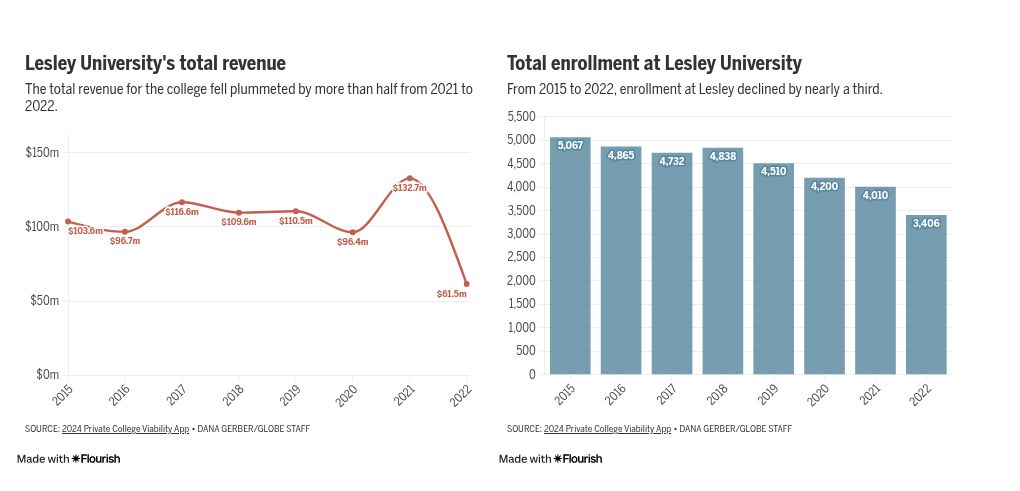Budget Cuts And Layoffs: The Current State Of University Finances

Table of Contents
The Root Causes of University Financial Strain
The current financial crisis in higher education is a complex issue stemming from a confluence of factors. Understanding these root causes is crucial to developing effective solutions.
Declining State Funding
State governments have historically been a major source of funding for public universities. However, in recent years, many states have significantly reduced their contributions. This decline is driven by various factors, including:
- Budgetary shortfalls: States facing economic downturns often prioritize other essential services, leading to cuts in higher education funding. For example, California's budget crisis in the early 2010s resulted in substantial cuts to the University of California system.
- Political priorities: Shifting political landscapes and changing priorities can lead to reduced funding for higher education, even during periods of economic growth. Some states have prioritized other areas, such as K-12 education or tax cuts, leading to decreased university funding.
- Impact on specific programs: Cuts often disproportionately affect specific programs, such as the arts, humanities, and social sciences, which may be perceived as less crucial than STEM fields. This can lead to program closures and faculty layoffs.
Rising Costs and Inflation
Universities face escalating operational costs, exacerbated by inflation. These rising expenses strain budgets, forcing difficult choices between maintaining services and absorbing increased costs.
- Utilities and infrastructure: The cost of maintaining aging campus infrastructure, including utilities, heating, and cooling, continues to rise. Deferred maintenance can lead to even greater expenses in the long run.
- Salaries and benefits: Faculty and staff salaries and benefits represent a substantial portion of university budgets. Keeping pace with inflation and market demands for skilled professionals requires significant financial resources.
- Absorbing inflation without tuition hikes: The challenge of maintaining affordability for students while absorbing rising costs creates a precarious balancing act for university administrations.
Shifting Demographics and Enrollment Trends
Changes in demographics and student preferences are also contributing to financial instability.
- Declining birth rates: Lower birth rates in some regions lead to a smaller pool of potential college students.
- Changing student preferences: Students are increasingly exploring alternative educational pathways, such as vocational schools or online learning programs, impacting traditional university enrollment.
- Increased competition: The increased availability of online learning options creates fierce competition for traditional universities, impacting enrollment and tuition revenue.
The Impact of Budget Cuts on University Operations
Budget cuts have far-reaching consequences for university operations, impacting various aspects of the academic environment.
Program Cuts and Consolidation
To address budget deficits, universities often resort to eliminating or merging academic departments, programs, and support services.
- Elimination of less popular majors: Programs with low enrollment numbers are often the first to be cut, impacting students’ academic choices and career paths.
- Merging departments: Related departments may be merged to reduce administrative overhead and faculty positions. This can result in a less specialized curriculum and potentially impact research opportunities.
- Impact on students and faculty: Program cuts result in significant disruptions for both students and faculty, potentially leading to increased student debt, career uncertainty, and faculty layoffs.
Increased Class Sizes and Reduced Course Offerings
Budget constraints often translate to larger class sizes and fewer course offerings, directly impacting the quality of student learning.
- Lower student-teacher ratios: Larger classes reduce the amount of individualized attention students receive, hindering their academic progress.
- Limited access to specialized courses: Budget cuts may force the elimination of less popular or specialized courses, limiting student choices and opportunities.
- Reduced access to resources: Fewer resources, such as specialized equipment or library materials, also limit students’ learning experience.
Deferred Maintenance and Infrastructure Issues
Budget cuts often lead to deferred maintenance and neglect of campus infrastructure, potentially compromising safety and the overall campus experience.
- Deferred repairs: Essential repairs and maintenance tasks are postponed due to lack of funding, leading to deterioration of buildings and equipment.
- Impacts on student safety: Neglect of infrastructure can pose safety risks to students, faculty, and staff.
- Negative impact on campus experience: A dilapidated campus environment diminishes the overall student experience and can negatively impact institutional prestige.
The Human Cost: Layoffs and Faculty Reductions
The impact of budget cuts extends beyond financial figures; it has significant human consequences, particularly for faculty and staff.
Impact on Faculty and Staff
Layoffs and reduced salaries have devastating effects on faculty and staff morale, institutional expertise, and the overall quality of education.
- Job losses and reduced salaries: Layoffs lead to job insecurity and financial hardship for affected individuals and their families.
- Loss of institutional knowledge: The departure of experienced faculty and staff results in a loss of institutional knowledge and expertise, hindering the university's ability to function effectively.
- Effects on research output: Budget cuts can severely limit research funding and opportunities, hindering the university's research output and its contribution to scholarly advancements.
Effects on Student Support Services
Cuts to student support services create additional challenges for students already grappling with academic pressures and financial strain.
- Reduced access to mental health services: Budget cuts can lead to reduced staffing and resources for mental health services, leaving students struggling with mental health issues without adequate support.
- Difficulties accessing academic support: Reduced staffing for academic advising, tutoring, and other support services can hinder students’ academic progress and increase their risk of dropping out.
- Longer wait times for assistance: Reduced staff levels translate to longer wait times for students seeking assistance, exacerbating their difficulties.
Potential Solutions and Strategies for Financial Sustainability
While the challenges are significant, universities are exploring various strategies to achieve long-term financial sustainability.
Exploring Alternative Funding Sources
Diversifying funding sources is crucial for long-term stability. Universities are exploring various avenues, including:
- Fundraising campaigns: Targeted fundraising campaigns can generate significant donations from alumni, corporations, and foundations.
- Philanthropic initiatives: Securing grants from philanthropic organizations can provide crucial support for specific programs or research initiatives.
- Public-private partnerships: Collaborations with private sector entities can lead to joint funding and research opportunities.
Increasing Efficiency and Reducing Operational Costs
Improving efficiency and reducing operational costs without compromising academic quality requires careful planning and implementation.
- Streamlining administrative processes: Modernizing administrative systems and eliminating redundancies can reduce operational costs.
- Consolidating services: Centralizing certain services or outsourcing non-core functions can also contribute to cost savings.
- Energy efficiency improvements: Investing in energy-efficient technologies and practices can significantly reduce utility costs.
Innovative Revenue Generation Models
Universities are exploring innovative models to generate new revenue streams.
- Online courses and programs: Expanding online course offerings can reach a broader audience and generate additional revenue.
- Partnerships with industry: Collaborating with industry partners can create opportunities for sponsored research, internships, and customized training programs.
- Entrepreneurial ventures: Universities are increasingly engaging in entrepreneurial activities, such as technology transfer and commercialization of research discoveries, to generate additional revenue.
Addressing the Crisis: A Call to Action on University Finances
The challenges facing higher education are severe and multifaceted, encompassing declining funding, rising costs, budget cuts, and layoffs. These trends threaten the accessibility and quality of higher education for future generations. The potential long-term consequences of inaction are profound. We need a collective effort to address this crisis. We urge readers to engage in informed discussions, support universities through donations or advocacy, and stay updated on the ongoing challenges facing higher education institutions. Support your local university, advocate for increased funding for higher education, and promote dialogue about sustainable solutions to help prevent further budget cuts and layoffs. Let's work together to secure the future of higher education.

Featured Posts
-
 Dodgers Defeat Mariners As Michael Conforto Extends Strong Performance
May 18, 2025
Dodgers Defeat Mariners As Michael Conforto Extends Strong Performance
May 18, 2025 -
 Drake Bells Comparison Of Amanda Bynes To Rachel Green From Friends
May 18, 2025
Drake Bells Comparison Of Amanda Bynes To Rachel Green From Friends
May 18, 2025 -
 Angels Collapse Late Lead Lost To Tatis Jr S Walk Off
May 18, 2025
Angels Collapse Late Lead Lost To Tatis Jr S Walk Off
May 18, 2025 -
 Execs Office365 Accounts Breached Millions Made Feds Say
May 18, 2025
Execs Office365 Accounts Breached Millions Made Feds Say
May 18, 2025 -
 Analyzing Trumps Aerospace Agreements Substance Vs Spectacle
May 18, 2025
Analyzing Trumps Aerospace Agreements Substance Vs Spectacle
May 18, 2025
Latest Posts
-
 Check Bbc Three Hd For Easy A Full Episode Listings
May 18, 2025
Check Bbc Three Hd For Easy A Full Episode Listings
May 18, 2025 -
 Find Easy A On Bbc Three Hd Your Tv Guide
May 18, 2025
Find Easy A On Bbc Three Hd Your Tv Guide
May 18, 2025 -
 Easy A Bbc Three Hd Tv Guide And Listings
May 18, 2025
Easy A Bbc Three Hd Tv Guide And Listings
May 18, 2025 -
 Amanda Bynes Only Fans Debut Challenges And Opportunities
May 18, 2025
Amanda Bynes Only Fans Debut Challenges And Opportunities
May 18, 2025 -
 Amanda Bynes Joins Only Fans A Look At Her Content Policy
May 18, 2025
Amanda Bynes Joins Only Fans A Look At Her Content Policy
May 18, 2025
